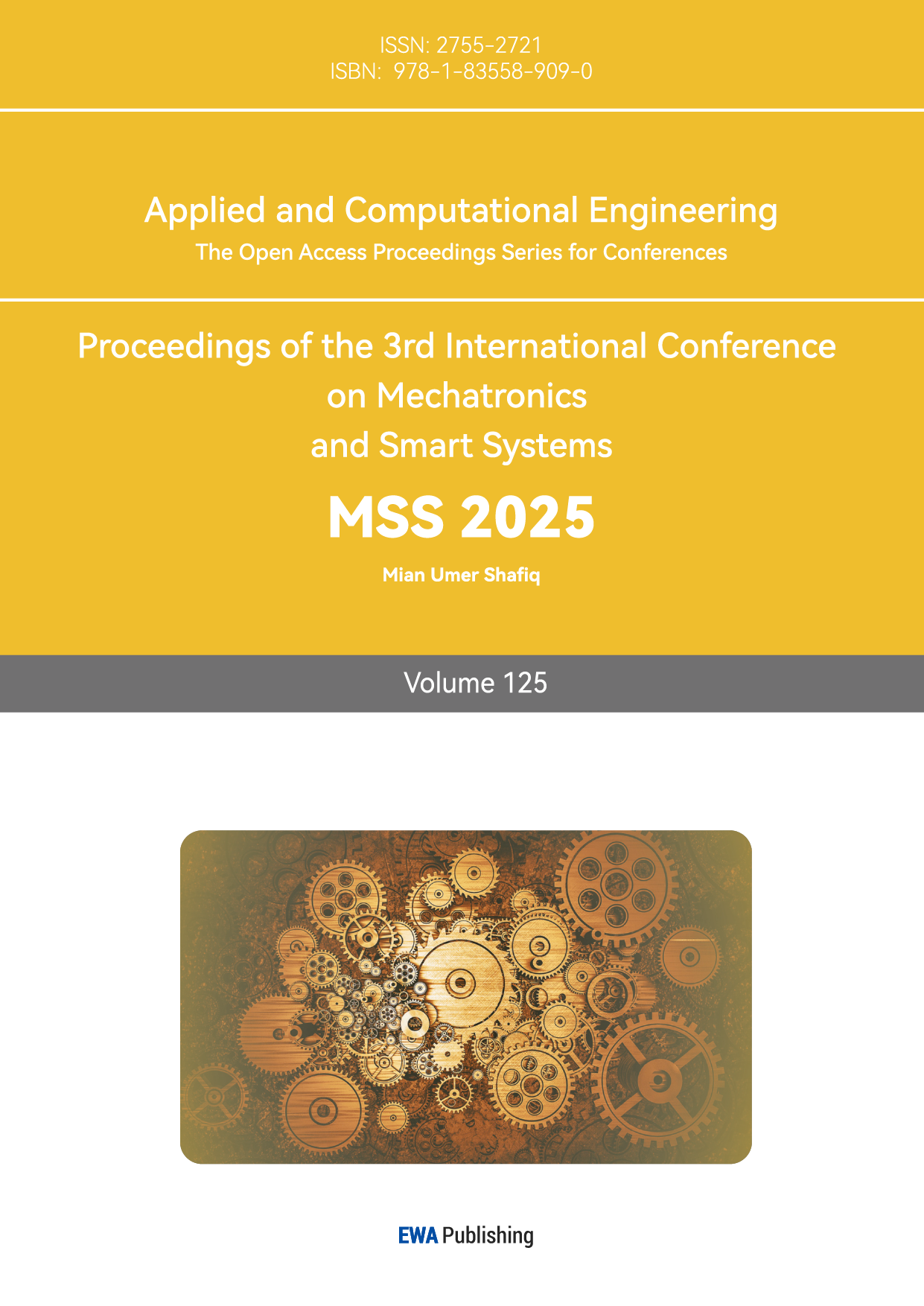1. Introduction
With the ongoing growth of power electronics in areas such as renewable energy, smart grids, smart homes, electrification of transportation, and electric or hybrid vehicles, as well as various emerging industrial and medical fields, the development of new wide bandgap (WBG) power semiconductor devices has increasingly attracted research attention."[1]. As third-generation WBG power semiconductor devices [2-3], silicon carbide (SiC) devices possess excellent material properties, such as higher operating frequency, lower junction-case resistance, improved radiation resistance, and the ability to operate at higher ambient temperatures [4-8]. They have demonstrated great potential in high-voltage, high-temperature, high-power, and high-frequency applications [9]. These devices are progressively replacing traditional silicon-based MOSFETs, becoming the primary choice for high-power and high-frequency applications. They are gaining widespread use in the field of new energy and are considered the most suitable devices to replace traditional Si-based IGBTs [10-11].
However, despite the numerous advantages and broad application prospects of SiC devices in power electronic converters, several technical challenges related to their performance under short-circuit conditions still need urgent resolution [12]. Compared to Si devices, SiC MOSFETs have a smaller chip area and higher current density, resulting in shorter short-circuit withstand times, weaker tolerance, and faster performance degradation under short-circuit conditions [13-14]. Consequently, when a short-circuit fault occurs, SiC MOSFETs endure higher short-circuit currents per unit die area and generate more heat [15-19]. Without timely short-circuit protection, SiC MOSFETs are at risk of burning out [20-23]. The significance of this issue is heightened in high-current MOSFET power modules, where the short-circuit safe operating area (SOA) usually spans only a few microseconds. This limitation leads to a robustness that is markedly less than that of silicon-based IGBTs. [24-25]. For large-scale applications, the reliability of these devices must be further improved. Therefore, understanding how the driving parameters of SiC MOSFETs influence their short-circuit characteristics is essential for optimizing design and enhancing system stability.
This paper aims to explore the short-circuit characteristics of SiC MOSFETs in detail, focusing on the specific effects of drive parameters, such as Gate Resistance (RG) and Gate-Source Voltage (VGS), on short-circuit behavior. By analyzing how these parameters influence short-circuit current during fault conditions, this study seeks to offer guidance for future researchers on designing SiC MOSFET drive circuits and protection schemes, ultimately improving the reliability and performance of SiC MOSFETs in practical applications.
2. Short Circuit Fault Types of SiC MOSFET
SiC MOSFET faults are generally categorized into short-circuit faults and overload faults. During a short-circuit fault, the power loop's inductance decreases significantly from its normal state, leading to a rapid current increase that can reach 8 to 10 times the typical level in a matter of microseconds. Under such conditions, the SiC MOSFET can only withstand the fault for a few microseconds before sustaining damage. Conversely, overload faults are marked by a gradual increase in current, which doesn't spike to extreme levels right away but instead steadily rises beyond the device's rated capacity. While no immediate damage may occur, prolonged overload can cause the temperature of the power devices to rise, eventually leading to system overheating. If the temperature reaches a critical threshold, heat accumulation inside the SiC MOSFET can lead to thermal runaway, significantly reducing the device's reliability.
Short-circuit faults in SiC MOSFETs can be further subdivided into two types: hard-switching short-circuits and load short-circuits.
In power conversion circuits, Hard Switching Faults (HSF) typically occur when the switch is either turned on or off. During the transition of a SiC MOSFET from the off-state to the on-state, significant voltage and current spikes are generated across the device due to parasitic inductances in the circuit and the rapid switching of voltage and current. If the circuit is not properly designed or if external interference occurs, these spikes may lead to transient overcurrent, resulting in a condition similar to a short circuit.
Fault Under Load (FUL) refers to a continuous low-impedance state at the load end caused by external faults or system abnormalities during circuit operation. This condition allows excessive current to flow through the SiC MOSFET over an extended period, subjecting the device to extreme current stress. Consequently, the internal power loss of the SiC MOSFET increases dramatically, causing a rapid rise in temperature. If timely protective measures are not implemented, prolonged load short-circuit conditions can result in thermal runaway and potentially lead to device failure.
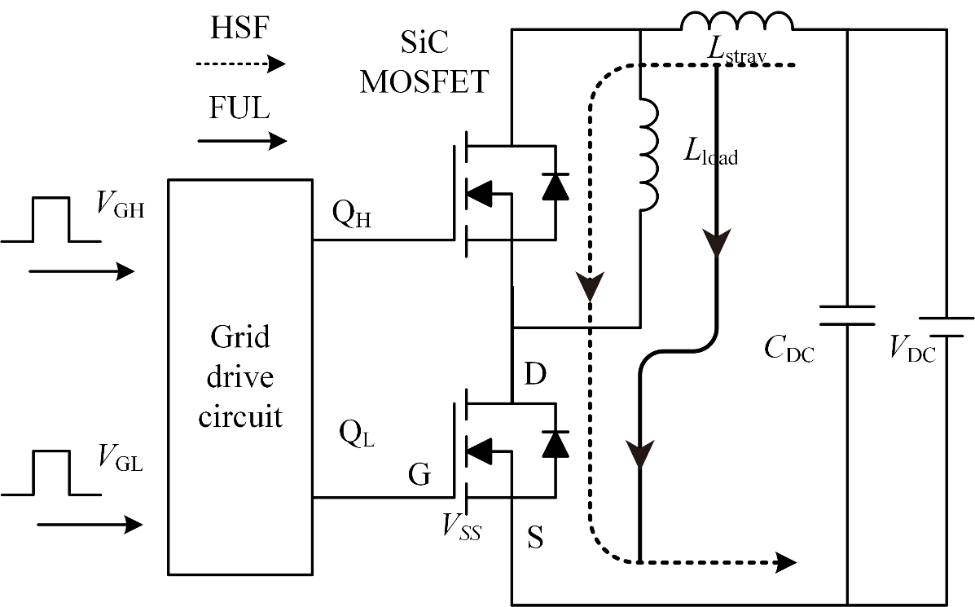
Figure 1: Schematic diagram of two types of short circuits[27].
3. Effect of Driving Parameters on Short-Circuit Characteristics
This section uses Spectre simulation software to study the effect of various driving parameters of SiC MOSFETs on their short-circuit characteristics. By altering the RG, VGS, and DC bus voltage (VDC), the changes in the short-circuit current (ID) are observed.
3.1. Effect of Gate Resistance RG on Short-Circuit Characteristics
When analyzing the effect of RG on the short-circuit characteristics of SiC MOSFETs, RG is varied while keeping the other circuit parameters constant. The values of RG are set at 10Ω, 37.5Ω, 50Ω, 75Ω, 98Ω, and 150Ω, respectively. The simulation waveforms of the current (ID) and drain-source voltage (VDS) during a short-circuit event are shown in the figure below [26].
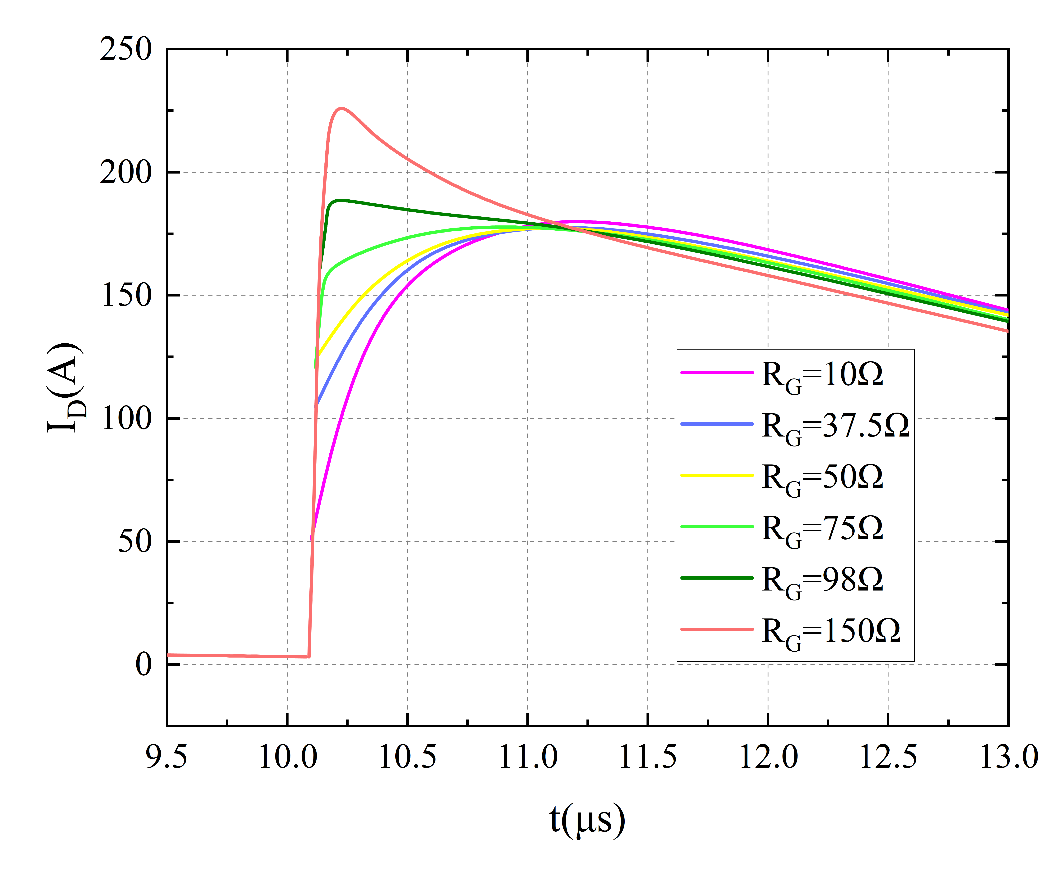
Figure 2: Short-circuit characteristics at different RG ID waveform [26].
It is evident from Figure 2 that as the RG of the SiC MOSFET increases, the rising speed of the short-circuit current (ID) decreases, the peak value of ID gradually reduces, and the time required to reach the peak value lengthens. This occurs because a larger RG reduces the gate charge and discharge current, thereby slowing the charging and discharging speed of the gate capacitance. This results in a slower turn-on and turn-off process for the SiC MOSFET, causing a more gradual increase in ID. Through analysis, it can be concluded that increasing RG slows down both the rate of current rise and the peak current during a short-circuit fault, reducing the overshoot of the turn-off voltage and thereby lowering the risk of damage to the SiC MOSFET. Nonetheless, if RG is excessively large, it will slow down the device's switching speed and raise the losses during the switching process.[26].
3.2. Effect of Gate Voltage VGS on Short-Circuit Characteristics
The driving voltage (VGS) directly affects the switching speed of SiC MOSFETs and their short-circuit characteristics. To specifically analyze the impact of VGS, the driving voltage is varied while keeping other circuit parameters constant. VGS is set at 17V, 18V, 19V, and 20V, respectively. The simulation waveforms of the current (ID) during a short-circuit event are shown in the figure below.
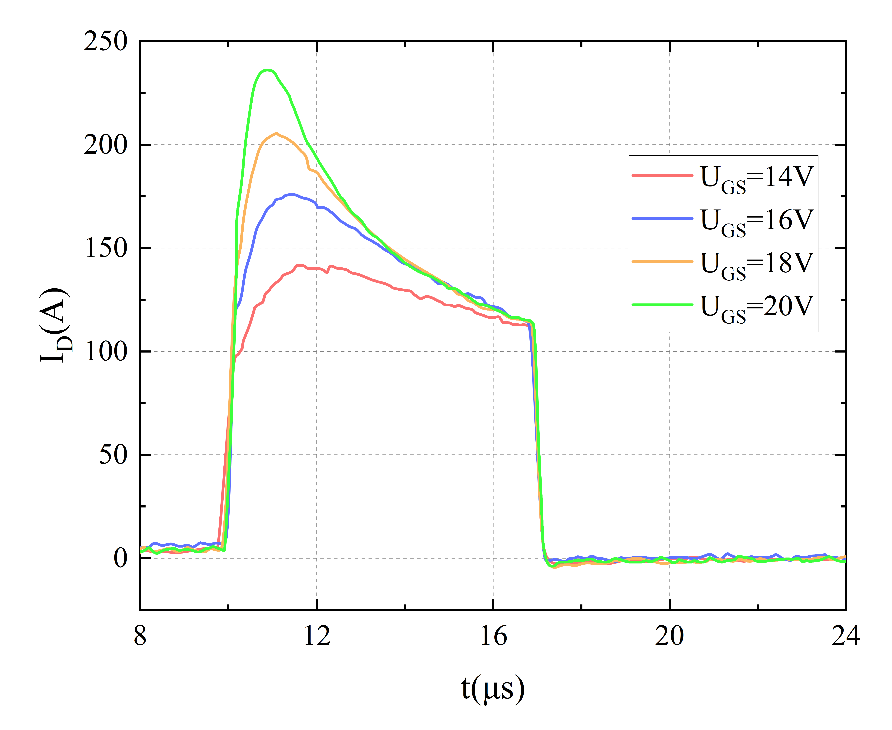
Figure 3: Short-circuit characteristics at different drive voltages (VGS) - ID waveform [26].
It can be observed from the figure 3 that as the VGS increases, the peak value of the short-circuit current (ID) rises significantly, and the current rise speed also accelerates. Additionally, the undershoot of the VDS during turn-on and the overshoot during turn-off both increase accordingly. As VGS increases, the saturation voltage drop of the SiC MOSFET decreases. Therefore, the higher the VGS, the smaller the on-resistance, which reduces delays and losses during the turn-on and turn-off processes. A larger VGS allows the SiC MOSFET to fully conduct, thereby reducing conduction losses. However, an excessively high driving voltage causes the device to experience greater short-circuit current and increased overshoot voltage during turn-off, reducing its short-circuit withstand capability, shortening the short-circuit withstand time, and increasing the risk of device damage. Conversely, if the driving voltage is too low, the SiC MOSFET will not fully conduct and will fail to operate within the linear region, leading to higher losses and degraded performance [26].
3.3. Effect of VDC on Short-Circuit Characteristics
The VDC directly impacts the short-circuit current (ID) and the VDS. The following analysis explores the effect of VDC on the short-circuit characteristics of SiC MOSFETs. With all other parameters held constant, the size of the VDC is varied.
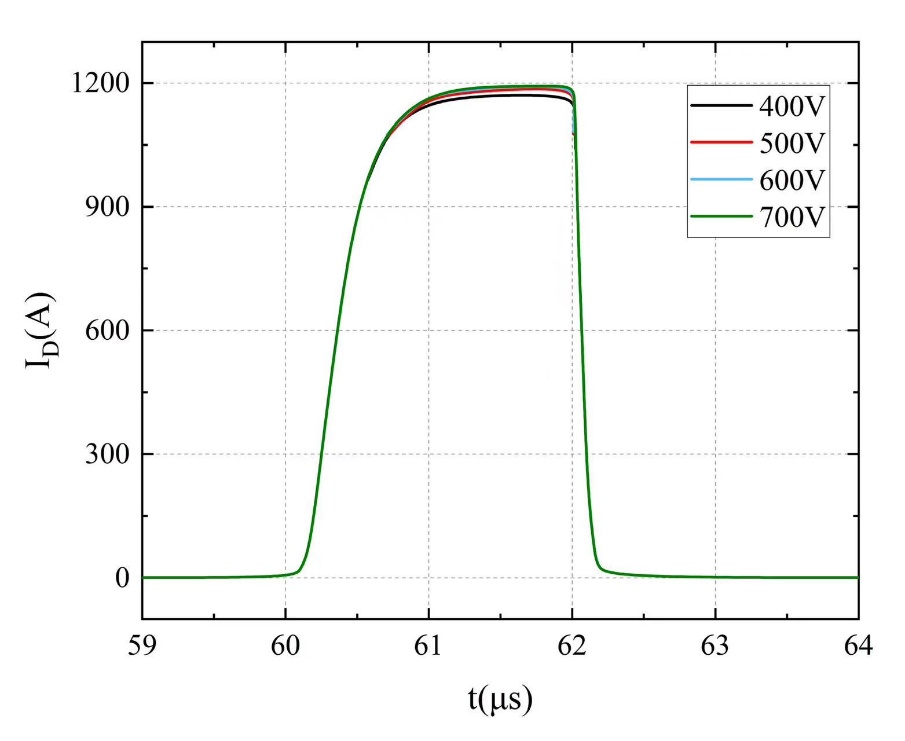
Figure 4: Short-circuit characteristics at different VDC - ID waveform[27].
It can be observed from Figure 4 that as the SiC MOSFET bus voltage (VDC) increases, the peak value of the short-circuit current (ID) rises slightly, and the current slope during the rise also increases modestly. The VDS increases in proportion to the rise in VDC, with the voltage undershoot during turn-on and the voltage overshoot during turn-off remaining nearly unchanged. There is no significant change in switching speed. Therefore, the VDC has minimal effect on the short-circuit current, but it significantly influences VDS. To prevent the voltage overshoot during turn-off from causing a breakdown of the device, the DC bus voltage is generally chosen with a reduced rating, leaving a certain safety margin [27].
4. Conclusion
The SiC MOSFET, as a new type of power semiconductor device, offers several advantages but faces challenges under short-circuit conditions. This article investigates its short-circuit characteristics, identifying two main types of short-circuit faults: hard-switch short circuits and load short circuits. Using Spectre simulation software, the effects of key driving parameters—such as RG, gate voltage (VGS), and VDC—on short-circuit characteristics are analyzed. Increasing RG can slow down the rise of short-circuit current, though excessive values will also reduce switching speed. Raising VGS increases both the peak value and rise speed of the short-circuit current, but a voltage that is too high raises the risk of device damage. On the other hand, VDC has minimal impact on the short-circuit current and primarily affects VDS. These findings provide valuable insights for optimizing the design and application of SiC MOSFETs, enhancing their reliability in practical use.
References
[1]. Yang F, Wang L, Kong H, et al. Compact-Interleaved Packaging Method of Power Module With Dynamic Characterization of 4H-SiC MOSFET and Development of Power Electronic Converter at Extremely High Junction Temperature[J]. IEEE Transactions on Power Electronics, 2022, 38(1):417-434.
[2]. Baliga B J. Fundamentals of power semiconductor devices[M]. New York: Springer Science & Business Media, 2010. 50-317
[3]. Shenai K, Scott R S, Baliga B J. Optimum semiconductors for high-power electronics[J]. IEEE Transactions on Electron Devices, 1989, 36(9):1811-1823
[4]. Baliga B J.Power applications[J].IEEE semiconductor Electron Device device figure of merit for high—fi'equency Letters, 1989, 10(10):455—457.
[5]. zpineci vehicle B.System impact of silicon applications[M].Doctoral carbide power electronics Dissertations.2002.
[6]. Sheng H, Chen Z, Wang F, et al. Investigation of 1.2 kV SiC MOSFET for high frequency high power applications[C]. Applied Power Electronics Conferenceand Exposition, California, United States, 2010: 1572-1577.
[7]. Hudgins J L, Simin G S, Santi E, et al. An assessment of wide bandgap semiconductors for power devices[J]. IEEE Transactions on Power Electronics, 2003, 18(3): 907-914.
[8]. Glaser J S, Nasadoski J J, Losee P A, et al. Direct comparison of silicon and silicon carbide power transistors in high-frequency hard-switched applications[C]. Applied Power Electronics Conference and Exposition, Texas, United States, 2011: 1049-1056.
[9]. Cai Y, Xu H, Sun P, et al. Effect of threshold voltage hysteresis on switching characteristics of silicon carbide MOSFETs[J]. IEEE Transactions on Electron Devices, 2021, 68(10):5014 5021.
[10]. Wen Y, Yang Y, Gao Y. Active gate driver for improving current sharing performance of 81 paralleled high-power SiC MOSFET modules[J]. IEEE Transactions on power electronics, 2020, 36(2):1491-1505.
[11]. Zhang L, Yuan X, Wu X, et al. Performance evaluation of high-power SiC MOSFET modules in comparison to Si IGBT modules[J]. IEEE Transactions on Power Electronics, 2018, 34(2): 1181-1196.
[12]. Fuentes C D, Kouro S, Bernet S. Comparison of 1700-V SiC-MOSFET and Si-IGBT modules under identical test setup conditions[J]. IEEE Transactions on Industry Applications, 2019, 55(6):7765-7775.
[13]. XuShe, AlexQ.Huang, Oscar Lucia et a1.”Review ofSilicon CarbidePowerDevices and TheirApplications”IEEE Trans.Industrial Eleclronics, v01.64, no.10, PP.8193—8205, Oct. 2017
[14]. Lee S, Kim K, Shim M, et al. A digital signal processing based detection circuit for short circuit protection of SiC MOSFET[J]. IEEE Transactions on Power Electronics, 2021, 36(12):13379-13382.
[15]. Ji S, Laitinen M, Huang X, et al. Short-circuit characterization and protection of 10-kV SiC MOSFET[J]. IEEE Transactions on Power Electronics, 2018, 34(2):1755-1764.
[16]. Z. Wang et al. Temperature-Dependent Short-Circuit Capability of Silicon Carbide Power MOSFETs[J]. IEEE Transactions on Power Electronics, 2016, 31(2), 1555-1556.
[17]. Boige F, Richardeau F. Gate leakage-current analysis and modelling of planar and trench powerSiC MOSFET devices in extreme short-circuit operation[J]. Microelectronics Reliability, 2017, 76: 532-538.
[18]. J. Wang, Z. Shen, C. DiMarino, R. Burgos and D. Borovevich, et al, “Gate driver design for 1.7kV SiC MOSFET module with Rogowski current sensor for shortcircuit protection, ”2016 IEEE Applied Power Electronics Conference and Exposition(APEC), Long Beach, CA, 2016, pp: 516-523.
[19]. D. Othman, M. Berkani, S. Lefebvre, A. Ibrahim, Z. Khatir, and A. Bouzourene, et al. Comparis on study on performences and robustness between SiC MOSFET&JFET devices-Abilities for aeronautics application, European Symposium on the Reliablity of Electron Devices, Failure Physics and Analysis. vol. 52. on. 9: pp. 1859-1964. Sep-2012.
[20]. Z. Wang, et al. “Temperature-dependent Short-circuit Capabiliilicon CarbidePower MOSFETs” in IEEE Transactions on Power Electronics: vol 31, no. 2, pp .1555-1566 Feb 2016.
[21]. X. Huang, G. Wang Y Li, A.Q. Huang and B Jayant Baliga. Short-circuit capabilityof 1200 V Sic MOSFET and JFET for fault protection, in Proc. IEEE Appl. PowerElectron. Conf Expo. 2013, pp. 197-200.
[22]. X. Liao, H. Li, Y Hu, Z. Huang, E. Song and H. Xiao, et al. Analysis of SiC MOSFET dI/dt and its temperature dependence[C]. IECON 2017-43rd Annual Conference of the IEEE Industrial Electronics Society, Beijing, 2017: 64-869.
[23]. T. Nguyen, A. Ahmed, T. V. Thang and J Park, et al, Gate Oxide Reliability Issues of Sic MOSFETS Under Short-circuit Operation, in IEEE Transactions on Power Electronicsvol. 30, no 5, pp. 2445-2455, May 2015.
[24]. G. Romano, et al. A Comprehensive Study of Short-circuit Ruggedness of SiliconCarbide Power MOSFETS, in IEEE Joumal of Emerging and Selected Topics in PowerElectronics, vol 4, no 3, pp. 978-987, Sept 2016.
[25]. Xing D, Hu B, Kang M, et al. 1200-V SiC MOSFET short-circuit ruggedness evaluation and methods to improve withstand time[J]. IEEE Journal of Emerging and Selected Topics in Power Electronics, 2022, 10(5):5059-5069.
[26]. Cui M , Li J , Du Y , et al.Behavior of SiC MOSFET under Short-Circuit during the On-State[C]//State Key Laboratory of Advanced Power Transmission Technology (Global Energy Interconnection Research Institute of State Grid Corporation of China);State Key Laboratory of Alternate Electrical Power System with Renewable Energy Sources (North China Electric Power University);, 2018:10.
[27]. Zhang M, M. Research on SiC MOSFET Short-circuit and Overload Protection Method and Chip Implementation [D]. Xi'an University of Technology, 2023.DOI:10.27398/d.cnki.gxalu.2023.000626.
Cite this article
Yu,J. (2025). Influence of SiC MOSFET Drive Control Parameters on Short Circuit Characteristics. Applied and Computational Engineering,125,40-46.
Data availability
The datasets used and/or analyzed during the current study will be available from the authors upon reasonable request.
Disclaimer/Publisher's Note
The statements, opinions and data contained in all publications are solely those of the individual author(s) and contributor(s) and not of EWA Publishing and/or the editor(s). EWA Publishing and/or the editor(s) disclaim responsibility for any injury to people or property resulting from any ideas, methods, instructions or products referred to in the content.
About volume
Volume title: Proceedings of the 3rd International Conference on Mechatronics and Smart Systems
© 2024 by the author(s). Licensee EWA Publishing, Oxford, UK. This article is an open access article distributed under the terms and
conditions of the Creative Commons Attribution (CC BY) license. Authors who
publish this series agree to the following terms:
1. Authors retain copyright and grant the series right of first publication with the work simultaneously licensed under a Creative Commons
Attribution License that allows others to share the work with an acknowledgment of the work's authorship and initial publication in this
series.
2. Authors are able to enter into separate, additional contractual arrangements for the non-exclusive distribution of the series's published
version of the work (e.g., post it to an institutional repository or publish it in a book), with an acknowledgment of its initial
publication in this series.
3. Authors are permitted and encouraged to post their work online (e.g., in institutional repositories or on their website) prior to and
during the submission process, as it can lead to productive exchanges, as well as earlier and greater citation of published work (See
Open access policy for details).
References
[1]. Yang F, Wang L, Kong H, et al. Compact-Interleaved Packaging Method of Power Module With Dynamic Characterization of 4H-SiC MOSFET and Development of Power Electronic Converter at Extremely High Junction Temperature[J]. IEEE Transactions on Power Electronics, 2022, 38(1):417-434.
[2]. Baliga B J. Fundamentals of power semiconductor devices[M]. New York: Springer Science & Business Media, 2010. 50-317
[3]. Shenai K, Scott R S, Baliga B J. Optimum semiconductors for high-power electronics[J]. IEEE Transactions on Electron Devices, 1989, 36(9):1811-1823
[4]. Baliga B J.Power applications[J].IEEE semiconductor Electron Device device figure of merit for high—fi'equency Letters, 1989, 10(10):455—457.
[5]. zpineci vehicle B.System impact of silicon applications[M].Doctoral carbide power electronics Dissertations.2002.
[6]. Sheng H, Chen Z, Wang F, et al. Investigation of 1.2 kV SiC MOSFET for high frequency high power applications[C]. Applied Power Electronics Conferenceand Exposition, California, United States, 2010: 1572-1577.
[7]. Hudgins J L, Simin G S, Santi E, et al. An assessment of wide bandgap semiconductors for power devices[J]. IEEE Transactions on Power Electronics, 2003, 18(3): 907-914.
[8]. Glaser J S, Nasadoski J J, Losee P A, et al. Direct comparison of silicon and silicon carbide power transistors in high-frequency hard-switched applications[C]. Applied Power Electronics Conference and Exposition, Texas, United States, 2011: 1049-1056.
[9]. Cai Y, Xu H, Sun P, et al. Effect of threshold voltage hysteresis on switching characteristics of silicon carbide MOSFETs[J]. IEEE Transactions on Electron Devices, 2021, 68(10):5014 5021.
[10]. Wen Y, Yang Y, Gao Y. Active gate driver for improving current sharing performance of 81 paralleled high-power SiC MOSFET modules[J]. IEEE Transactions on power electronics, 2020, 36(2):1491-1505.
[11]. Zhang L, Yuan X, Wu X, et al. Performance evaluation of high-power SiC MOSFET modules in comparison to Si IGBT modules[J]. IEEE Transactions on Power Electronics, 2018, 34(2): 1181-1196.
[12]. Fuentes C D, Kouro S, Bernet S. Comparison of 1700-V SiC-MOSFET and Si-IGBT modules under identical test setup conditions[J]. IEEE Transactions on Industry Applications, 2019, 55(6):7765-7775.
[13]. XuShe, AlexQ.Huang, Oscar Lucia et a1.”Review ofSilicon CarbidePowerDevices and TheirApplications”IEEE Trans.Industrial Eleclronics, v01.64, no.10, PP.8193—8205, Oct. 2017
[14]. Lee S, Kim K, Shim M, et al. A digital signal processing based detection circuit for short circuit protection of SiC MOSFET[J]. IEEE Transactions on Power Electronics, 2021, 36(12):13379-13382.
[15]. Ji S, Laitinen M, Huang X, et al. Short-circuit characterization and protection of 10-kV SiC MOSFET[J]. IEEE Transactions on Power Electronics, 2018, 34(2):1755-1764.
[16]. Z. Wang et al. Temperature-Dependent Short-Circuit Capability of Silicon Carbide Power MOSFETs[J]. IEEE Transactions on Power Electronics, 2016, 31(2), 1555-1556.
[17]. Boige F, Richardeau F. Gate leakage-current analysis and modelling of planar and trench powerSiC MOSFET devices in extreme short-circuit operation[J]. Microelectronics Reliability, 2017, 76: 532-538.
[18]. J. Wang, Z. Shen, C. DiMarino, R. Burgos and D. Borovevich, et al, “Gate driver design for 1.7kV SiC MOSFET module with Rogowski current sensor for shortcircuit protection, ”2016 IEEE Applied Power Electronics Conference and Exposition(APEC), Long Beach, CA, 2016, pp: 516-523.
[19]. D. Othman, M. Berkani, S. Lefebvre, A. Ibrahim, Z. Khatir, and A. Bouzourene, et al. Comparis on study on performences and robustness between SiC MOSFET&JFET devices-Abilities for aeronautics application, European Symposium on the Reliablity of Electron Devices, Failure Physics and Analysis. vol. 52. on. 9: pp. 1859-1964. Sep-2012.
[20]. Z. Wang, et al. “Temperature-dependent Short-circuit Capabiliilicon CarbidePower MOSFETs” in IEEE Transactions on Power Electronics: vol 31, no. 2, pp .1555-1566 Feb 2016.
[21]. X. Huang, G. Wang Y Li, A.Q. Huang and B Jayant Baliga. Short-circuit capabilityof 1200 V Sic MOSFET and JFET for fault protection, in Proc. IEEE Appl. PowerElectron. Conf Expo. 2013, pp. 197-200.
[22]. X. Liao, H. Li, Y Hu, Z. Huang, E. Song and H. Xiao, et al. Analysis of SiC MOSFET dI/dt and its temperature dependence[C]. IECON 2017-43rd Annual Conference of the IEEE Industrial Electronics Society, Beijing, 2017: 64-869.
[23]. T. Nguyen, A. Ahmed, T. V. Thang and J Park, et al, Gate Oxide Reliability Issues of Sic MOSFETS Under Short-circuit Operation, in IEEE Transactions on Power Electronicsvol. 30, no 5, pp. 2445-2455, May 2015.
[24]. G. Romano, et al. A Comprehensive Study of Short-circuit Ruggedness of SiliconCarbide Power MOSFETS, in IEEE Joumal of Emerging and Selected Topics in PowerElectronics, vol 4, no 3, pp. 978-987, Sept 2016.
[25]. Xing D, Hu B, Kang M, et al. 1200-V SiC MOSFET short-circuit ruggedness evaluation and methods to improve withstand time[J]. IEEE Journal of Emerging and Selected Topics in Power Electronics, 2022, 10(5):5059-5069.
[26]. Cui M , Li J , Du Y , et al.Behavior of SiC MOSFET under Short-Circuit during the On-State[C]//State Key Laboratory of Advanced Power Transmission Technology (Global Energy Interconnection Research Institute of State Grid Corporation of China);State Key Laboratory of Alternate Electrical Power System with Renewable Energy Sources (North China Electric Power University);, 2018:10.
[27]. Zhang M, M. Research on SiC MOSFET Short-circuit and Overload Protection Method and Chip Implementation [D]. Xi'an University of Technology, 2023.DOI:10.27398/d.cnki.gxalu.2023.000626.





